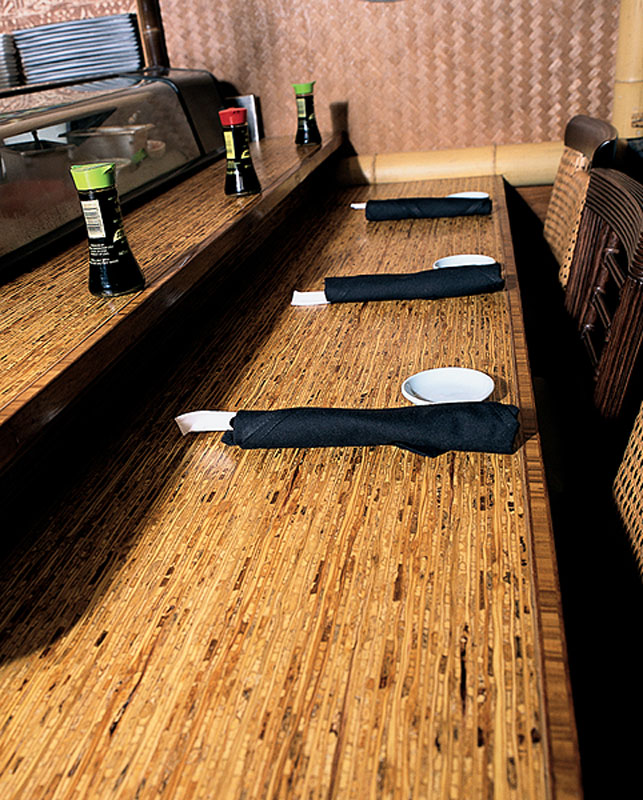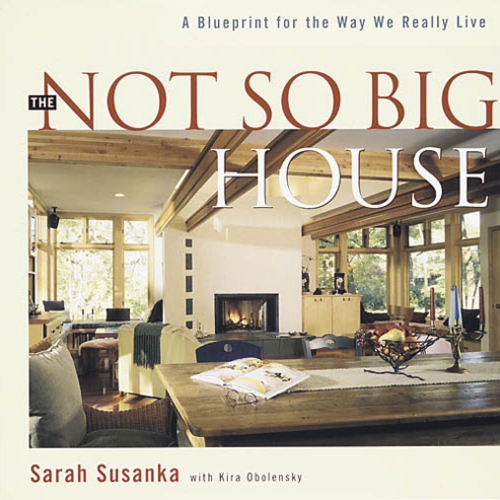
Image Credit: Kirei USA
Last week I wrote about one of the common myths of green building: that it has to cost more to build green. This week, I’ll tackle another myth: that green building is mostly about materials.
This isn’t quite as significant a misconception as it was a few years ago, but there are still a lot of people who think green building is largely about using products that are made from recycled waste materials, or agricultural products, or rapidly renewable products like bamboo. It is still common to hear about how “green” a building is because of the recycled-glass tiles in the entrance foyer or the carpet that’s made from recycled soda bottles.
Using recycled-content and bio-based materials is a great idea, but materials are only one–relatively small–aspect of green design. Usually more important are the following:
- Where we build. The location of a home or commercial building has a huge impact on how much energy is used (and pollution generated) in getting to and from it. In fact, it’s not unusual for the “transportation energy intensity” of a building to be greater than the direct energy intensity of that building. In other words, for many structures, especially office buildings and retail stores, more energy is spent getting workers and customers to and from those buildings than the buildings themselves use. As energy codes are strengthened, this becomes a more and more significant issue.
- Energy performance. To be considered green, a building has to be energy efficient. This is usually the number-one priority in green design, and it’s the reason that energy-saving features typically earn the most points in green building rating systems like LEED (though I often argue that location is even more important). With existing buildings–where we can’t change the location–reducing energy consumption is almost always the number-one greening priority.
- Indoor air quality. A building that makes people sick can’t be green. As we focus on other measures, it is vitally important that we pay attention to indoor air quality. This involves addressing moisture sources (that can cause mold); seepage of radon into the building from surrounding soil or rock; formaldehyde offgassing from cabinets and wood panel products; and VOC offgassing from sealants, adhesives, and coatings.
- Water efficiency. In some parts of the country, conserving water is a top priority. Even in areas that aren’t particularly arid, water can be a significant issue during times of drought, or if sewage treatment capacity is limited. As we saw in the Southeast in late 2007, drought can be a huge issue even in areas where water has long been plentiful. In the eastern U.S. our reservoirs are generally a lot shallower than in the West, so the impacts of drought are felt more quickly, and we’re not conditioned to think about water conservation. Some experts suggest that, in the coming decades, water may be an even bigger concern than energy.
Green building is about the integration of a lot of issues, including all of those listed above. Material selection is certainly something we should pay attention to, but it’s rarely the top priority. Don’t ignore the materials being used in a new building or renovation project, but pay more attention to these other considerations.
I invite you to share your comments on this blog.
To keep up with my latest articles and musings, you can sign up for my Twitter feeds
Weekly Newsletter
Get building science and energy efficiency advice, plus special offers, in your inbox.















8 Comments
I'm with you
Whenever I get called by a reporter for a quote on "green" materials, I refuse to even talk about them until they listen to my entire "green is all process" lecture. Most of them actually appreciate it. Eventually there is some discussion of materials, but as you stated, they are such a small part of the picture that often the entire article is refocused onto the important stuff.
on the other hand...
In America it appears that nothing matters but post-consumer energy consumption. You can build a house out of styrofoam and concrete ICFs and clad it in vinyl and not bother putting in a heat recovery ventilator, but they will call it green because it saves energy, even as it poisons its occupants.
Another big one...
I'd put durability up there with top priorities for green building. Buildings that need a continual input of labor- and material-intensive maintenance or repairs are just as bad as buildings that use a lot of energy, and that's not green. Buildings that need little maintenance, last for a long time, and are flexible in their configuration and use: to me that looks very green.
Back to the other hand
lloyd,
Not sure what you mean by post-consumer energy? Do you mean operational energy?
EPS is not the worst stuff on the planet considering both embodied energy and the global warming potential of the blowing agent (better than many other foams). It is often considered one of the most environmentally friendly foam choices their is.
Projects are called green all the time that don't save energy over code or very little. All you need to do is game some LEED points in site management, points for indoor air quality like shoe cubbies etc. Slap some bamboo that has been grown with pesticides, carbon intensive fertilizers, on a recently clear cut forest and shipped from China and you too can be LEED certified. Better yet just call it green with no certification and add some cheap bamboo and a concrete countertop. This is basically why I hate the term 'green'. It was conceived by marketers and it means nothing. Again a building that is 'green' may achieve very little in the way of energy savings (both considering operational energy and life cycle analysis derived embodied energy). This is illustrated in LEEDs own documentation of energy savings. The variance in energy performance between buildings that meet the LEEDs standard is massive. There is still a lot of gaming going on.
Until a building (depending on location, climate etc) is built to a very high level of efficiency operational energy will dwarf embodied energy. That is not to say we shouldn't be thinking about embodied energy but conservation is always fundamental and should not be discounted. We need not first fetishize products, though we need to think about them too. Strategy, building science, and a systems approach are supreme.
embodied energy
reducing energy consumption is almost always the number-one greening priority.
unfortunately most developers don't want to tackle this unless they have to. they'd rather grab the cheapo points up front. we deal with it all the time. until LEED mandates significant energy reductions, it's just a tool to be gamed.
Mandating energy conservation in LEED
Has there been any talk to mandate energy reductions in LEED? What is the likelihood of this happening in the next few years? Or will it just stay as a game-able standard where unscrupulous builders can always race to the bottom. In the age of global warming a green standard that doesn't deal with energy conservation in a tangible way just isn't responsible and isn't really green.
Materials choice on green
Materials choice on green projects needs to be contextual. The science should drive the design, then the materials choices avail themselves. Materials are, of course, important, but less so as finish materials (except IAQ issues) or design choices. There are a lot of stakeholders huddled under the green building umbrella, and all come to the conversation from different perspectives. I make my living sourcing materials for projects; and my humble opinion is that there is usually a right product for the attribute under discussion.
Its not all about any one thing, its the sum of the whole
While it is true that energy performance, water efficiency, durability, siting and IAQ are very important, I think you do a disservice to materials by listing them as relatively insignificant. Personally I think they should all be at the top of the list. We need all the help we can get. By marginalizing materials, you are swinging the focus like a pendulum to the other side when it seems like you want to encourage integration, which looks at relationships.
What I believe the disservice you do to materials is that all of the above depend on the type of materials you chose and vise versa. Green buildings are made out of materials.
I think instead we should be looking at all of the above and understanding how they work together to achieve the low impact and healthy results we are looking for.
As far as what constitutes green materials, I think we need a better understanding of the scale of embodied energy different materials have. For instance, bamboo flooring in VT is much less green than hardwood flooring from the building site or within 20 miles. And to list foam as a good choice for green building projects neglects the importance of needing to stop relying on oil to create buildings. We can achieve better performance characteristics using non-foam insulation like cellulose. And this gets back to the myopic vision we tend to get when we try to solve some crises, we look at things in isolation.
So I heartily concur with your movement towards holistic thinking, but the above myth busting does not quite get there for me.
The next myth in this line of thinking would be that green building is all about the energy.
Log in or create an account to post a comment.
Sign up Log in